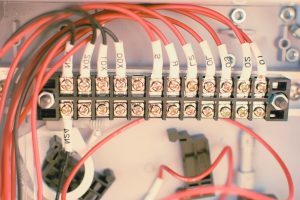How to Determine Normal Operating Conditions for Electrical Equipment in NFPA 70E 2024?
Overview
Electrical devices must only be approached after confirming their operating conditions. NFPA 70E’s Section 110.4(D) facilitates this assessment by defining the normal operating conditions of electrical devices. These conditions are determined based on various criteria, including installation, maintenance, coverings, adherence to manufacturer guidelines, and the absence of observable vulnerabilities. In the 2024 version of NFPA 70E, a significant revision was made, relocating this content to Section 110.2(B) and adding a seventh requirement: equipment must be rated for fault current. This new requirement guarantees that devices are capable of handling potential faults, thus enhancing the safety of both equipment and employees and reducing the risks of catastrophic failure.
installation, maintenance, coverings, adherence to manufacturer guidelines, and the absence of observable vulnerabilities. In the 2024 version of NFPA 70E, a significant revision was made, relocating this content to Section 110.2(B) and adding a seventh requirement: equipment must be rated for fault current. This new requirement guarantees that devices are capable of handling potential faults, thus enhancing the safety of both equipment and employees and reducing the risks of catastrophic failure.
Applying the 2024 Code
It is crucial to determine the operating conditions of electrical devices before interacting with them. When an electrical device is functioning correctly, it can be interacted with normally. For example, a properly working circuit breaker can be switched on or off without significant risk. However, if a fault or hazard occurs, the interaction process changes. In these situations, the device should be taken out for maintenance or replacement, with appropriate risk mitigation measures in place.
Section 110.4(D) of 2021 NFPA 70E provided specific criteria for establishing the normal operating conditions of electric equipment. It defined normal operation based on six conditions: proper installation, maintenance history, secure closure of covers and doors, adherence to manufacturer guidelines, and absence of impending failures. Interaction with devices should only be allowed when these conditions are met. However, the 2024 version introduced a significant revision, consolidating content from various articles and relocating them to Section 110.2(B). One critical revision added a seventh requirement for determining normal operation, which now includes being rated for available fault current. This requirement mandates that equipment must be appropriately designed to handle potential fault currents, thus enhancing safety and reducing the risk of catastrophic failures in case of a fault.
What’s New for the 2024 NFPA 70E?
The table below presents a comparison between the 2021 NFPA 70E and the 2024 NFPA 70E regarding Section 110.2(B).
2021 NFPA 70E |
2024 NFPA 70E |
| 110.4(D) Normal Operating Condition.
Normal operation of electric equipment shall be permitted where a normal operating condition exists. A normal operating condition exists when all of the following conditions are satisfied: (1) The equipment is properly installed. (2) The equipment is properly maintained. (3) The equipment is used in accordance with instructions included in the listing and labeling and in accordance with manufacturer’s instructions. (4) The equipment doors are closed and secured. (5) All equipment covers are in place and secured. (6) There is no evidence of impending failure.
|
110.2(B) When Required
Energized electrical conductors and circuit parts operating at voltages equal to or greater than 50 volts shall be put into an electrically safe work condition before an employee performs work if any of the following conditions exist: (1) The employee is within the limited approach boundary. (2) The employee interacts with equipment where conductors or circuit parts are not exposed but an increased likelihood of injury from an exposure to an arc flash hazard exists. Exception No. 1: Normal operation of electric equipment shall be permitted where a normal operating condition exists. A normal operating condition exists when all of the following conditions are satisfied: (1) The equipment is properly installed. (2) The equipment is properly maintained. (3) The equipment is rated for the available fault current. (4) The equipment is used in accordance with instructions included in the listing and labeling and in accordance with manufacturer’s instructions. (5) The equipment doors are closed and secured. (6) All equipment covers are in place and secured. (7) There is no evidence of impending failure. |
